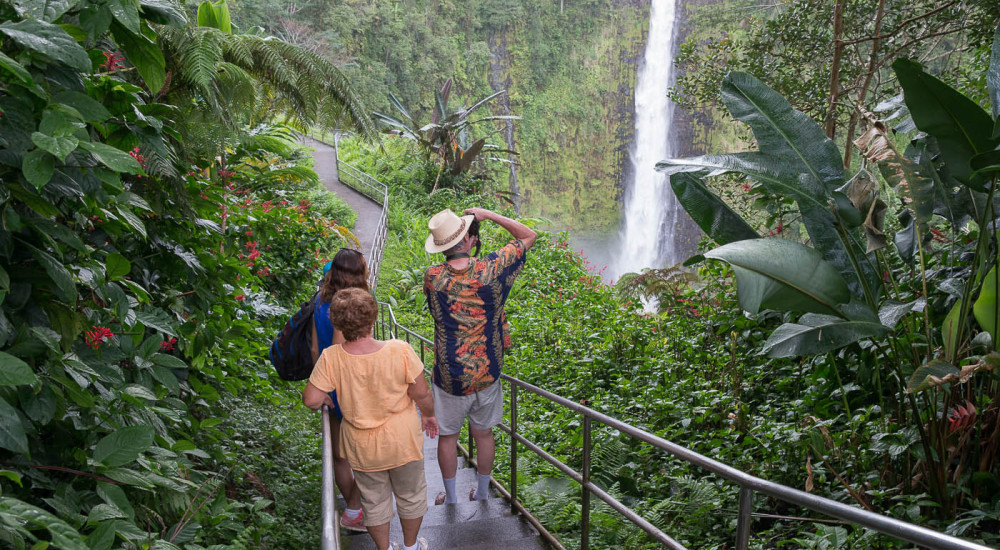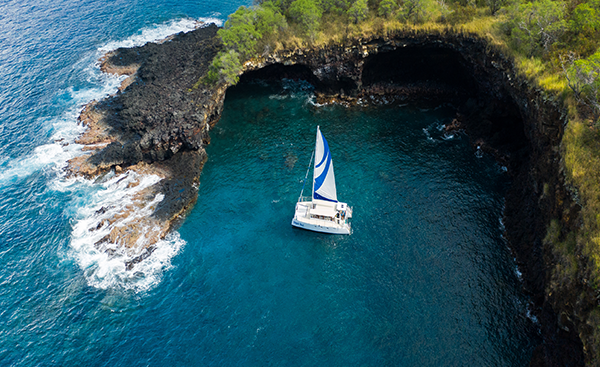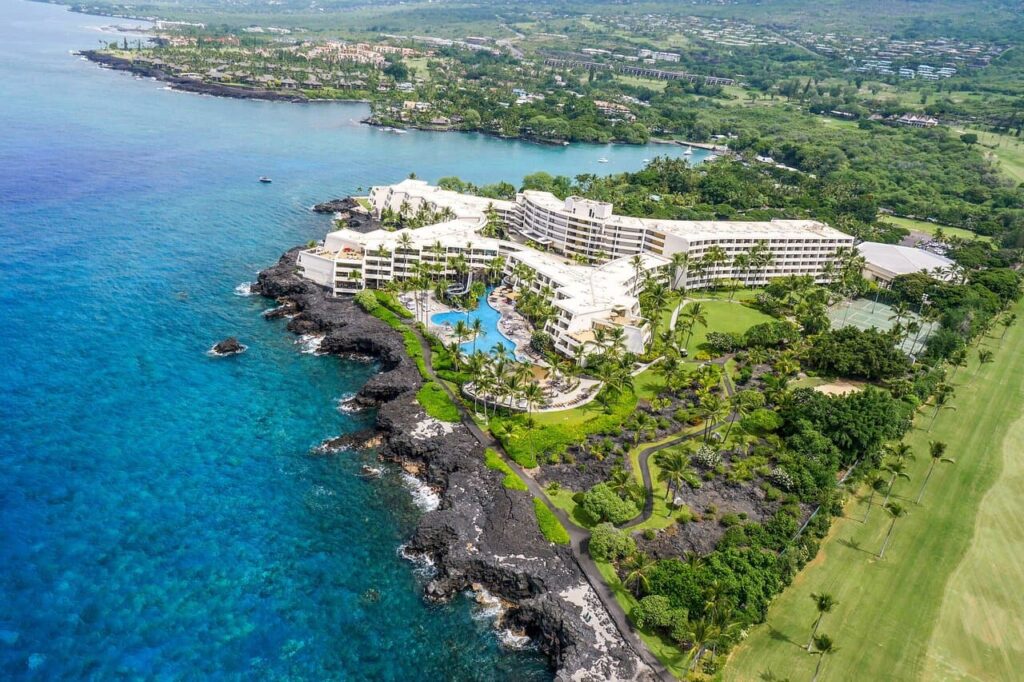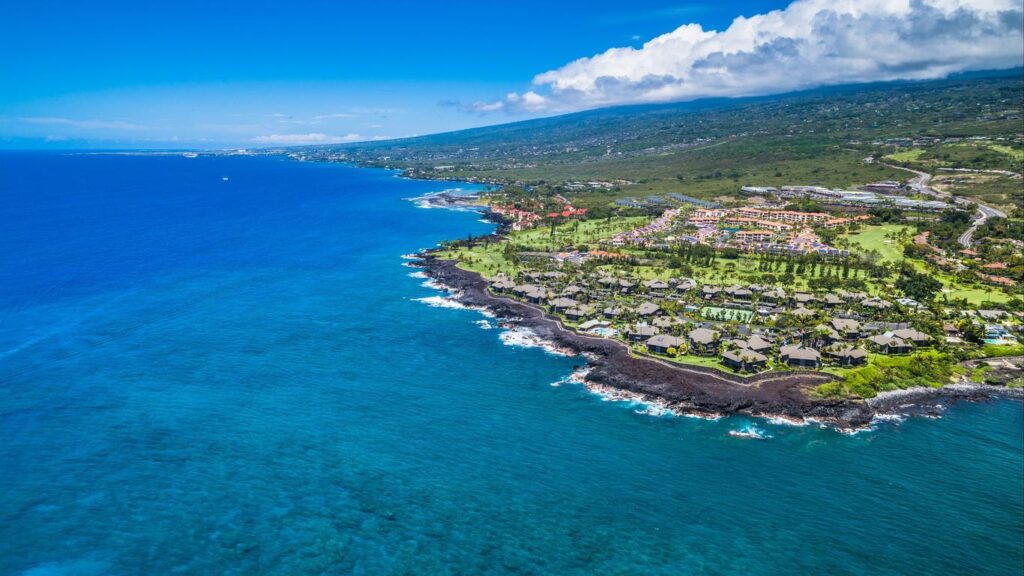The Big Island (officially named Hawaii) is the largest island in the United States’ Hawaiian archipelago in the Central Pacific. Its diverse terrain spans colored-sand beaches at Papakolea (green) and Punalu’u (black) to lush rainforest. Within Volcanoes National Park, there are 2 active volcanoes, Kilauea and Mauna Loa. Hapuna Beach and Kahalu’u Beach Park in the west are popular snorkeling sites.
Hawaiʻi is said to have been named after Hawaiʻiloa, the legendary Polynesian navigator who first discovered it. Other accounts attribute the name to the legendary realm of Hawaiki, a place from which some Polynesian people are said to have originated, the place where they transition to in the afterlife, or the realm of the gods and goddesses. Captain James Cook, the English explorer and navigator who was captain of the first European expedition that came upon the Hawaiian Islands, called it O-Why-hee (from Hawaiian) and the “Sandwich Islands” after his patron, the Earl of Sandwich.[7] Cook was killed on the Big Island at Kealakekua Bay on 14 February 1779, in a melee which followed the theft of a ship’s boat.[8]
Hawaiʻi was the home island of Paiʻea Kamehameha, later known as Kamehameha the Great. Kamehameha united most of the Hawaiian islands under his rule in 1795, after several years of war, and gave the kingdom and the island chain the name of his native island.[9] In 1822 the missionary William Ellis arrived and was one of a party that completed a tour of the island, descriptions of which were later published in his journal.[10]















